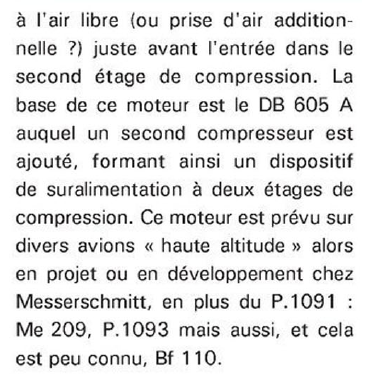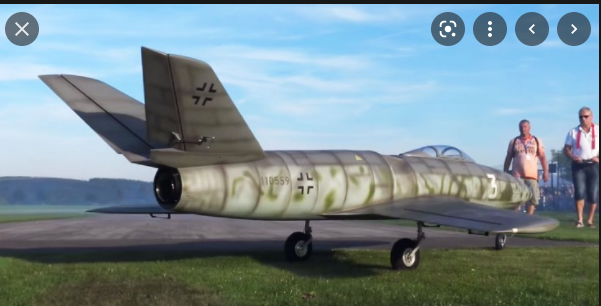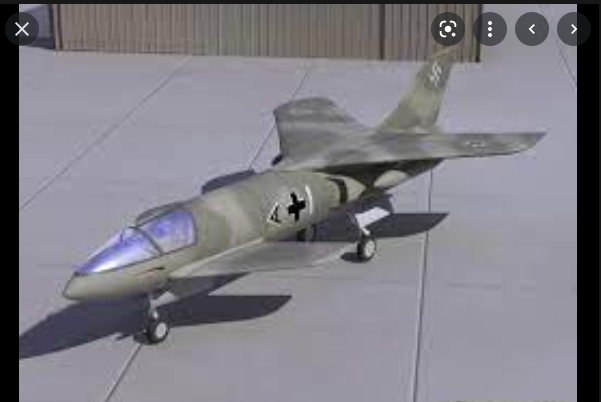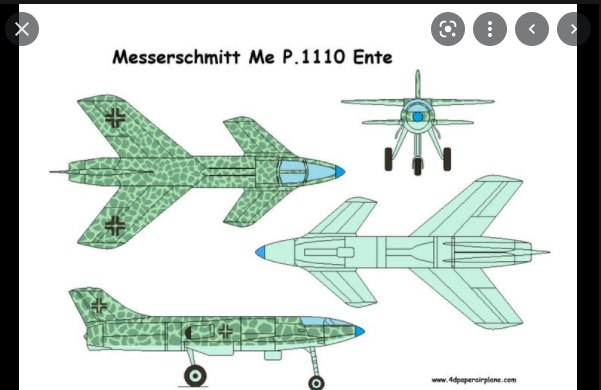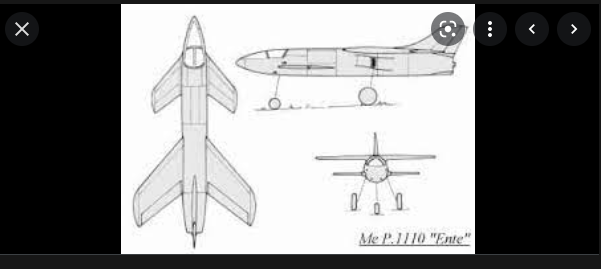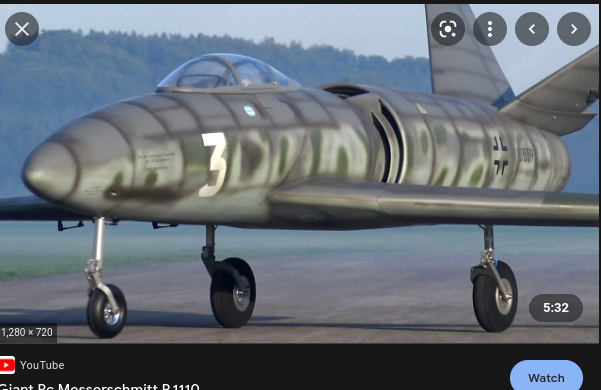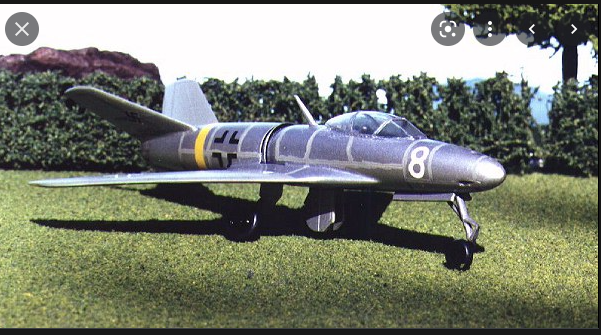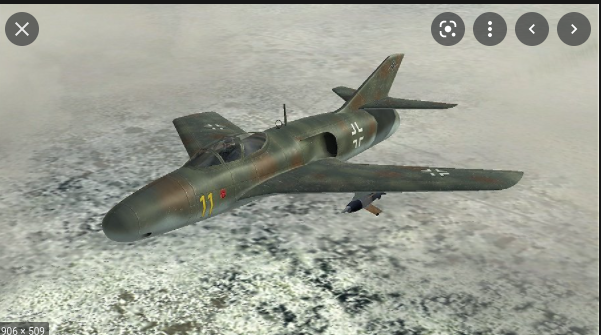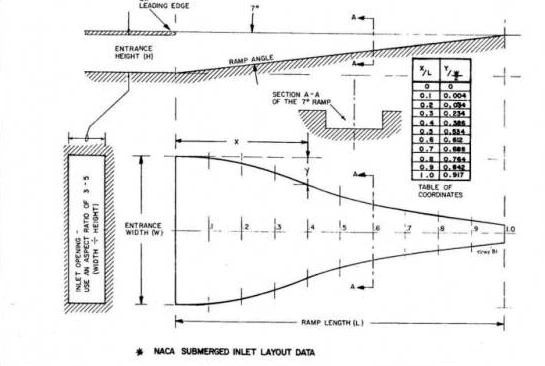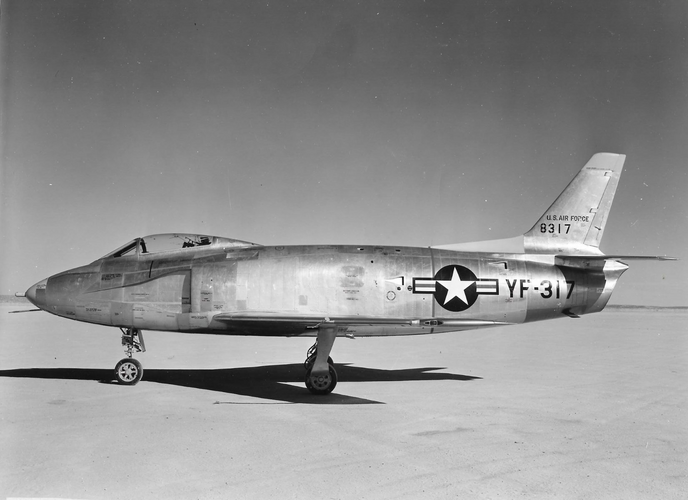The
Messerschmitt P.1110 (
Me P.1110) was a design for a single-seat, high-
altitude interceptor, prepared for the German
Luftwaffe by the
Messerschmitt aircraft manufacturing company, under the
Emergency Fighter Program during the last months of
World War II.As part of the
Emergency Fighter Program (
German:
Jägernotprogramm), at the beginning of 1945, a programme was launched by the
OKL for a new generation of fighter/interceptor aircraft in order to replace the
He 162 Volksjäger. The new aircraft was intended to have superior performance, in order to deal with high-altitude threats such as the
B-29 Superfortress.Messerschmitt designed a number of different high-altitude fighter projects which were submitted in February 1945. One of the designs, the Me P.1110
Ente (Duck), had a 40°
wing sweep and annular air
intakes in front of the wing root (similar to those on the post-war
North American YF-93), feeding a single
Heinkel HeS 011A jet engine; the annular intakes, while flowing four percent less air, would produce fifteen percent less drag than a single nose intake.
[1] The aircraft was to be armed with three
MK 108 cannon in the nose, plus perhaps two more in the 40°-swept wings. There was also a proposed
butterfly tail variant. Projected maximum speed was 1,015 km/h (631 mph; 548 kn).
The project would be soon dropped in favor of the other two more conventional designs, but the
Junkers EF 128 was chosen as the official winner of the competition and none of the Messerschmitt designs reached the prototype stage.the designs brought forward by other German aircraft makers were the
Heinkel P.1078, the
Focke-Wulf Ta 183 and the
Blohm & Voss P 212.A further development, the
P.1111, with
wing root intakes (a concept later adopted by the
Republic RF-84F Thunderflash and
F-105 Thunderchief) to overcome the power losses and 45° sweep, was prepared in January 1945 but never built. with fully swept wings, this plane could have fully been the first airplane to break the sound barrier in a shallow dive. but due to the end of war, this very frighting airplane was never built. but if the me p.1106 would have been produced? well for one it would have been revourlarntroay, with it being able to break the sound barrier, every allied aircraft would have been vunerable, with it most likley having ammuniation. its a great thing this plane does not exist.

